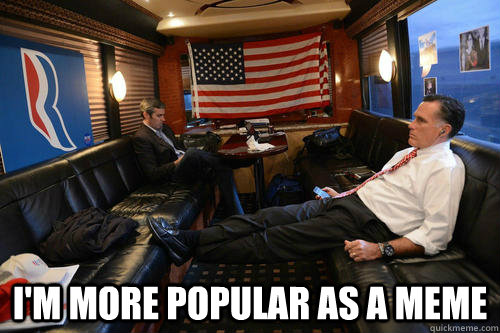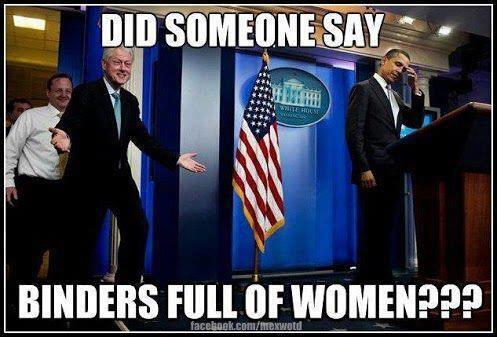
The Sudden Realization Romney image macro that emerged during the aftermath of the election.
Hey all! It’s been a while since my last post on the Civic Media blog, and as we enter the home stretch of the semester, it seems appropriate for me to give an update on my CMS.360 final project regarding the 2012 presidential race—what is now being called the first meme election (Know Your Meme has a great macro overview of the whole thing). In particular, I will explain how the project has developed since my initial proposal in both scope and format. First, considering how little time is left in the term, I have scrapped my ambitions of producing an interactive web app component for this project in favor of writing an academic paper. That being said, I’m still committed to utilizing quantitative methods in addition to just doing close readings of memes-as-texts—e.g. data mining and discourse analysis.

Diving into the meme pool
Rather than do a broad overview of the many internet memes spawned during the election cycle as Know Your Meme has already done, I will instead focus on the subset that emerged during the debates. The purpose of doing this is twofold. For one, this will allow for the reduction of scope. Only looking at the debates drastically limits the number of examples to review, allowing for deeper drilling into a few memes. Moreover, these would all be memes originating from statements made by the candidates, as opposed to some of the other political memes, which may be rooted in absurdist humor or references that may not be immediately relevant to the election itself. Thus emerges the second benefit of focusing exclusively on the debates: the debate memes were created in real-time as responses or critiques to what the candidates actually said. Such memes are more explicitly part of the political discourse, as opposed to something like Not Bad Obama, which features the likeness of President Obama yet is not inherently a form of political commentary. Furthermore, tying the analysis to specific events introduces a whole new angle of timeliness and temporality, which should be interesting from a data perspective.

The meme is not the territory
Which brings me to my next point: the central goal of the paper will not be to break down the internet meme as a media object; rather, my paper will attempt to situate the meme as part of a broader media ecology—after all, what’s a meme good for if it doesn’t spread, multiply, mutate? Specifically, I will examine how the debate memes were circulated around the internet across multiple social networks, e.g. Twitter, Facebook, Tumblr, etc. I will also look at—perhaps more interestingly—how these internet memes were picked up and remediated by mainstream news outlets, popular culture, and—in some cases—the Obama/Romney campaigns themselves. Rodrigo Davies and I skimmed the surface of this topic as part of an earlier discussion; my research will surely delve into the idea of meme-as-political-strategy.

Preliminary list of memes
- First Presidential Debate: Big Bird/Sesame Street
- Vice Presidential Debate: Laughing Joe Biden/Malarkey
- Second Presidential Debate: Binders Full of Women
- Third Presidential Debate: Horses and Bayonets
I’ve chosen the biggest meme from each of the four debates to analyze; that’s not to say I won’t make references to some of the smaller memes, such as Menacing Josh Romney—I just want to keep the paper narrowly defined and focused. That’s it for this project update—tune in next time, as I delve into Twitter network analysis of the relevant hashtags for these memes and play around with graph visualizations using Gephi! Look forward to it.
